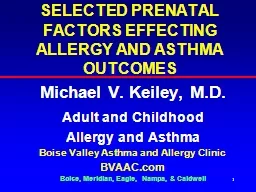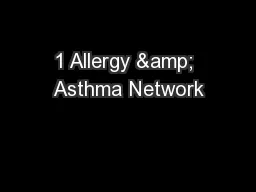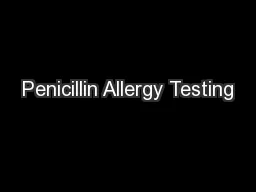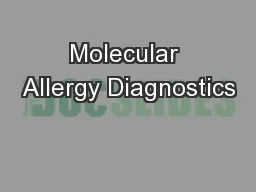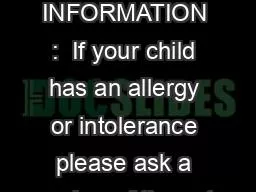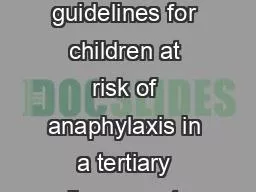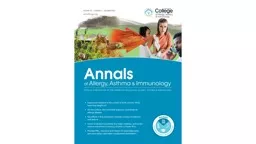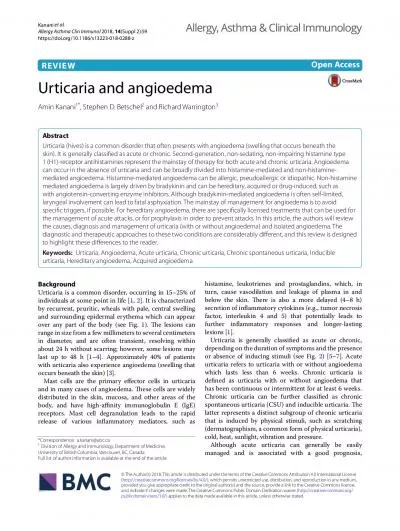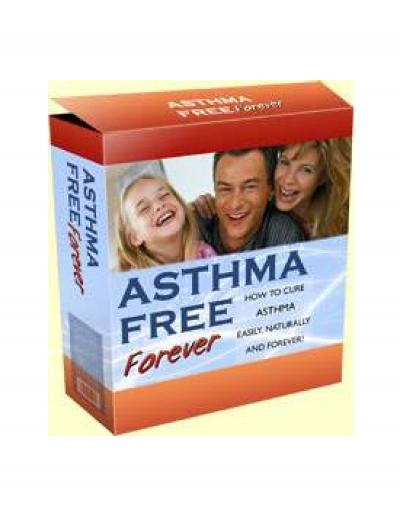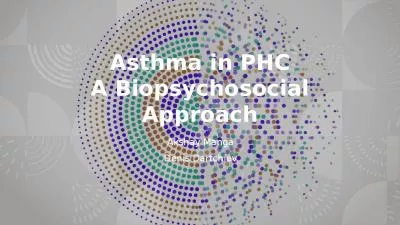PPT-1 SELECTED PRENATAL FACTORS EFFECTING ALLERGY AND ASTHMA OUTCOMES
Author : adah | Published Date : 2022-06-08
Michael V Keiley MD Adult and Childhood Allergy and Asthma Boise Valley Asthma and Allergy Clinic BVAACcom Boise Meridian Eagle Nampa amp Caldwell 2 SELECTED PRENATAL
Presentation Embed Code
Download Presentation
Download Presentation The PPT/PDF document "1 SELECTED PRENATAL FACTORS EFFECTING AL..." is the property of its rightful owner. Permission is granted to download and print the materials on this website for personal, non-commercial use only, and to display it on your personal computer provided you do not modify the materials and that you retain all copyright notices contained in the materials. By downloading content from our website, you accept the terms of this agreement.
1 SELECTED PRENATAL FACTORS EFFECTING ALLERGY AND ASTHMA OUTCOMES: Transcript
Download Rules Of Document
"1 SELECTED PRENATAL FACTORS EFFECTING ALLERGY AND ASTHMA OUTCOMES"The content belongs to its owner. You may download and print it for personal use, without modification, and keep all copyright notices. By downloading, you agree to these terms.
Related Documents

